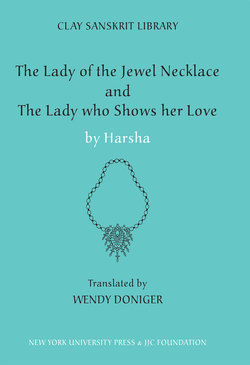Читать книгу The Lady of the Jewel Necklace & The Lady who Shows her Love - Harsha - Страница 21
На сайте Литреса книга снята с продажи.
Оглавлениеintended to make his co-wife, until the king saw through the disguise by means of her skill in the art of garland-making [text 2, ‘Ocean of the Rivers of Story’ (15–16), the co-wife Padmavati]; and, in a third, Udayana became unfaithful and inadvertently called Vasava·datta by the name of her rival, and, later, secretly seduced—while the queen watched in hiding—yet another rival that she had tried in vain to conceal from him [text 3, ‘Ocean of the Rivers of Story’ (14), Virachita]. This cycle of stories was taken up in three Sanskrit dramas, one by Bhasa, who replaced the magic transformations and disguises with a dream sequence [text 4, ‘Vasava·datta in a Dream,’ Padmavati again], and two by Harsha, who replaced them with a portrait of a co-wife, a magic plant fertilizer and a magic show [text 5, ‘The Lady of the Jewel Necklace’], and with a play within a play [text 6, ‘The Lady who Shows her Love’]. We may represent the basic plots of these six texts on a chart:________
Text
Genre
What
conceals
Who is
disguised
What
reveals
1. Ocean of the
Rivers of Story
narrative
magic
magician
sleep
2. Ocean of the
Rivers of Story
narrative
magic
queen
garland/
portrait
3. Ocean of the
Rivers of Story
narrative
disguise
co-wife
slip of the
tongue
4. Vasava·datta
in a Dream
play
disguise
queen
dream/
portrait
5. The Lady of the
Jewel Necklace
play
disguise
co-wife
necklace/
portrait/magic
6. The Lady who
Shows her Love
play
disguise
co-wife
play/magic
